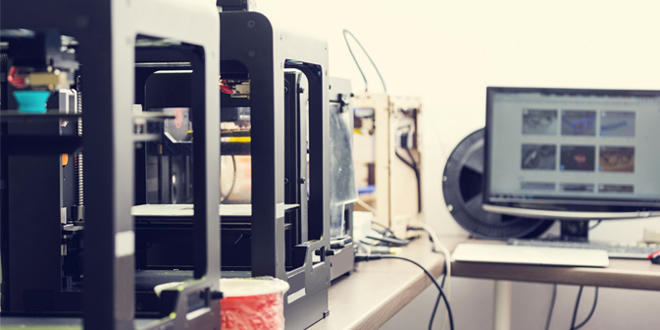Manufacturing Innovation Blog
Powered by the Manufacturing Extension Partnership

Rapid prototyping using technologies that build parts layer by layer, aka additive manufacturing or 3D printing, has been around for a couple of decades. It is a standard means of nimbly designing and checking parts against customer needs.
Though there are more technologies now than there were in the early days, the practice of using any of them to produce prototypes in rapid, iterative cycles is not new. The technologies have also been used in final production of custom parts. For example, orthodontia, prosthetics, and aerospace components are high-value products that lend themselves to custom-friendly 3D-printing technologies.
Additive manufacturing (AM) technologies are also being used throughout the product development lifecycle. Through conversations with our MEP Centers, I learned that engineers at the Centers have been helping small and medium-sized manufacturers tackle some very interesting problems using AM technologies.
Products that will be fabricated by traditional or even advanced manufacturing techniques can be represented for a variety of purposes using AM. For example, a microscopic product can be zoomed out into one that folks can demonstrate and fiddle with to imagine how it can interact with other parts. Likewise, AM can help to shrink a very large, clumsy product into one that can fit in your hand, so you can again demonstrate, fiddle with, and imagine. Such scaled up or down models can support sales and marketing, and other non-engineering purposes such as attracting investors.
Products to be fabricated using conventional techniques will need tooling that sometimes is tough to imagine with only a 2D image from a design software. AM printed tools created for specific molds, spools, dies, feeders can help engineers more cost-effectively and quickly arrive at the best tool geometry for the job. It can also help test out the overall manufacturing process that the tool fits within.
An unexpected application for AM came up when an MEP Center engineer was trying to convince a manufacturer that a piece of an assembly could be made from plastic instead of a more expensive metal and still be acceptable to the customer. By quickly fashioning the substitute using AM, he demonstrated that plastic wasn’t as flimsy as expected and the customer would have not only the right feel, but a more affordable product. The manufacturer was able to confidently shift to plastic using old-school injection molding which otherwise would have been cost-prohibitive to demonstrate to the customer.
It is great to know that our MEP Centers are leveraging AM in many ways for unconventional purposes, including ways that fit within a conventional manufacturing environment. From testing for usability and functionality, to figuring out how products will be assembled, AM is a versatile, exciting technology that can help a smaller manufacturer creatively improve their products and their processes, while building their bottom line.
About the author
Related Posts
Comments
- Reply

